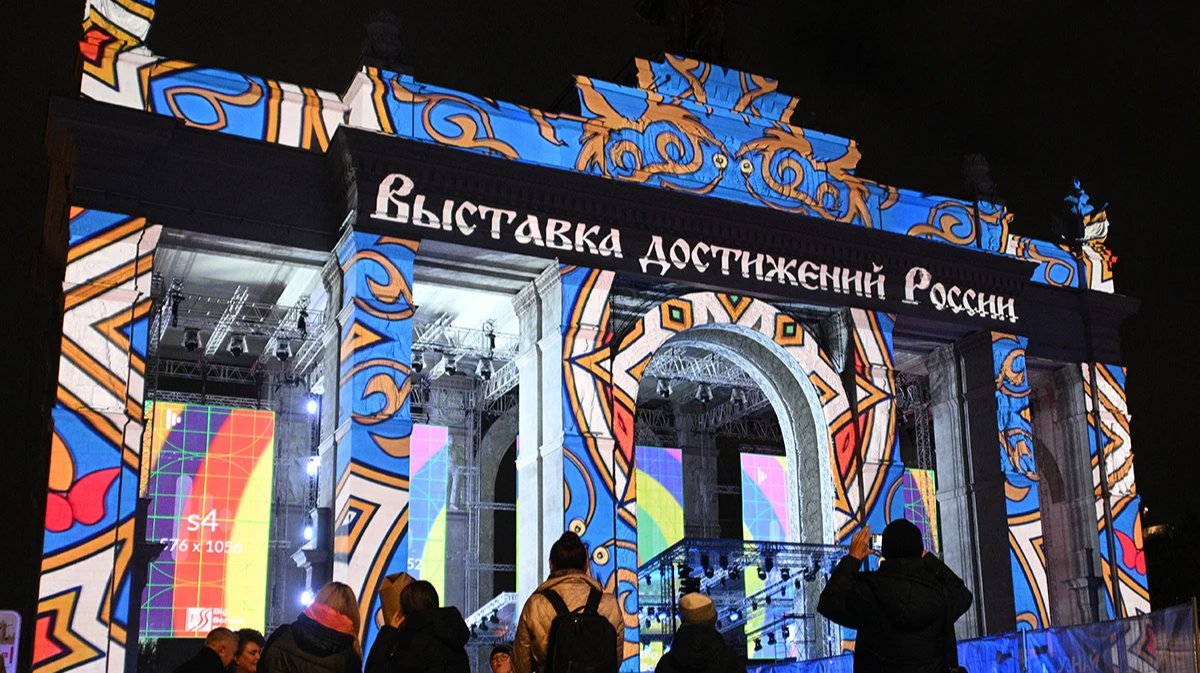Shamelessly appealing to Russian national pride ahead of next year’s presidential election, a huge new prestige project at the All-Russia Exhibition Centre in Moscow was unveiled earlier this month that aims to set out Russia’s accomplishments in almost a quarter of a century of Putin’s rule.
Virtually a country
On Russia’s Day of National Unity, a triumphant new exhibition opened in Moscow, promising visitors “a demonstration of the country’s principle achievements” and making no bones about “all 89 regions of Russia” taking part — a reference to Russia’s 83 internationally recognised regions and the six regions it has annexed from Ukraine in breach of international law.
With next year’s presidential election fast approaching, the exhibit is timely for the Kremlin, giving it a platform to persuade Russians that Putin is responsible for transforming Russia into a hi-tech wealthy nation.
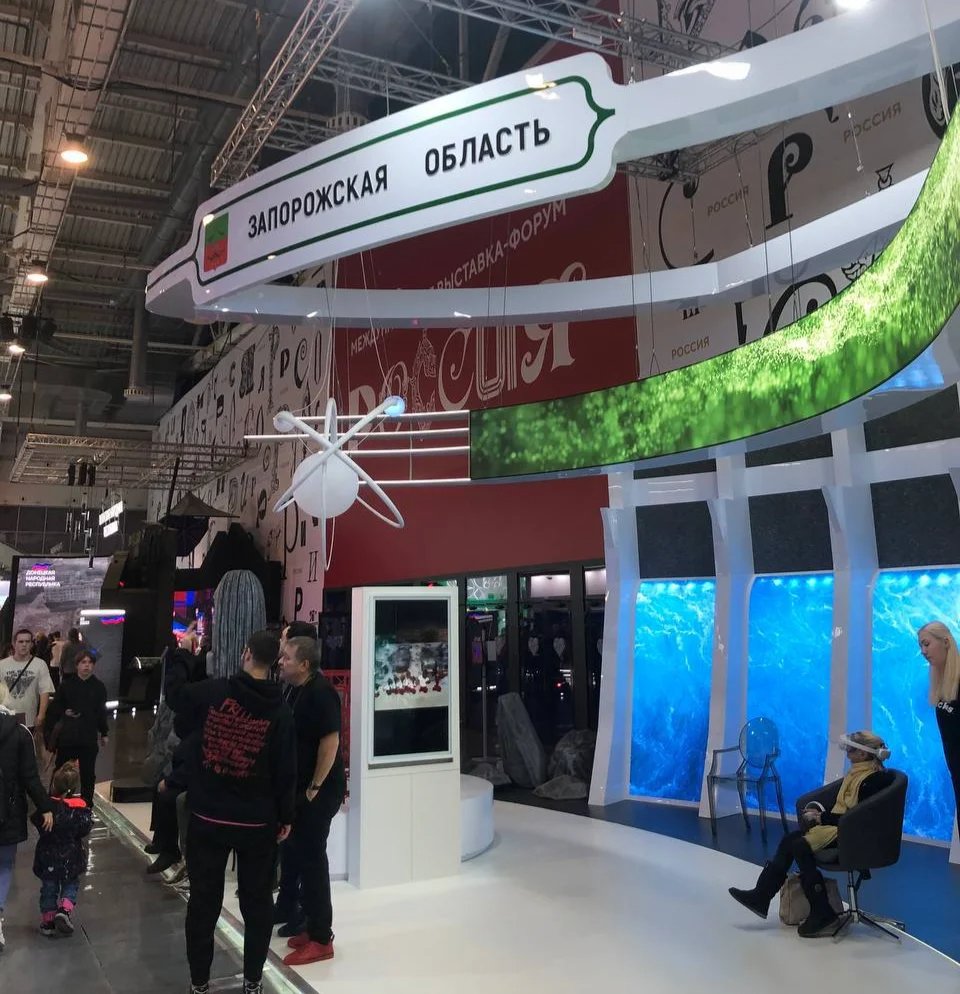
The ‘Zaporizhzhia Region’ stand. Photo: Vadim Stepanov for Novaya Gazeta Europe
According to a study by independent Russian media outlet Sirena, 5.1 billion rubles (€52 million) from the state budget was spent on the exhibition, with even the poorest parts of the country reportedly contributing. The Tuva region’s 14 million-ruble (€143,000) contribution, for example, matches the annual sum the regional administration spends on resettling people living in unsafe housing.
Upon exiting VDNKh metro station, visitors are greeted by the Living Map of Russia, where individual regions light up in turn, and a bored guide informs bored schoolchildren: “This is a kinetic panel in the form of a carpet made originally by Chuvash weavers. They presented the carpet to their governor as a present, and then decided to weave one for each Russian region, and mailed a piece of fabric to each region. These fragments were used to make the panel.”
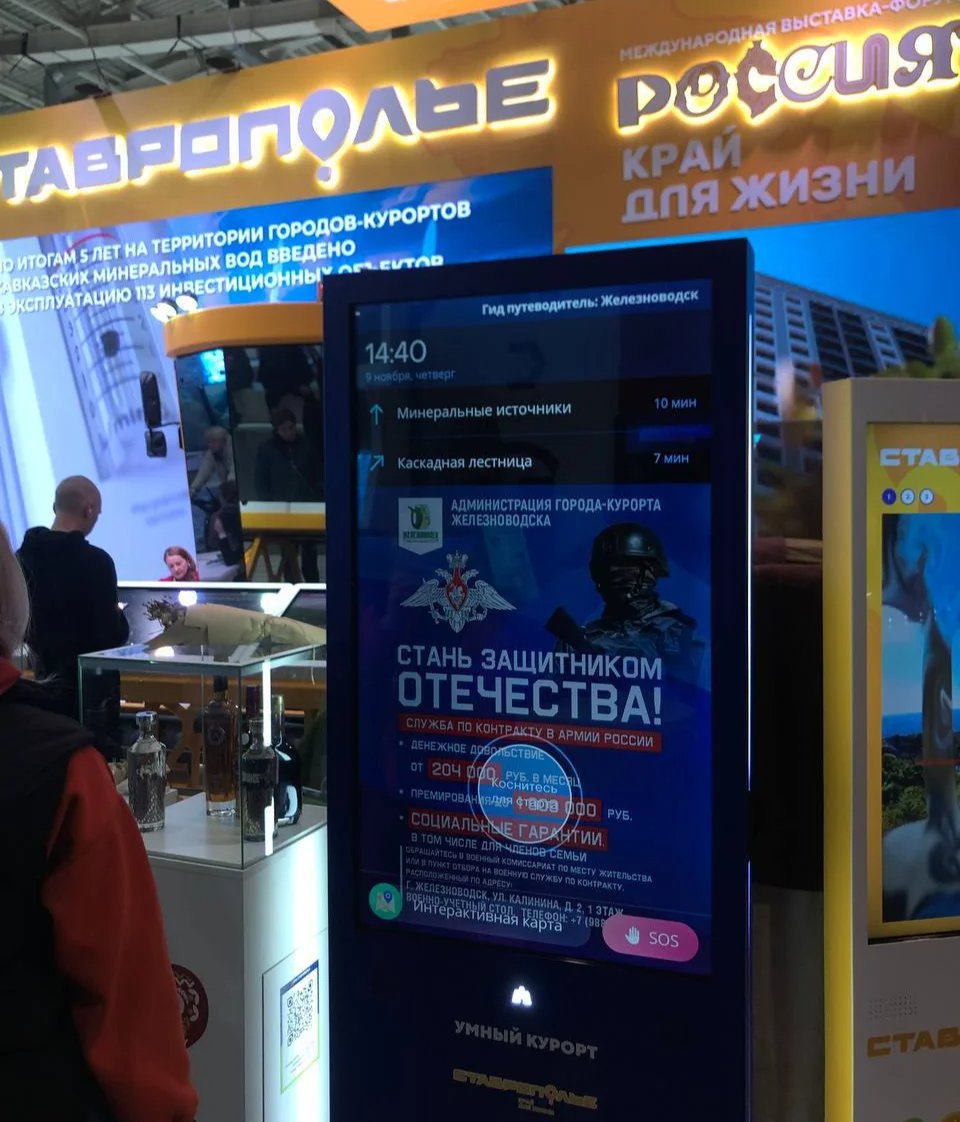
A military recruitment ad on the interactive map of the exhibit. Photo: Vadim Stepanov for Novaya Gazeta Europe
Grandfatherly hi-tech
There are 41 stops in the exhibition, beginning with the Gallery of Russian Achievements, where the country’s various accomplishments, triumphs and successes are displayed to the accompaniment of triumphal music. One visitor described it as “grandfatherly hi-tech — as if a drunk old man had tried to explain what “hi-tech” meant by saying “imagine, a rug in the form of the country, but it’s DIGITAL”.
The corporate pavilions are exactly what you might see at any professional expo: social media giant VK boasts that it has “almost completely replaced other video-based social networks in Russia”, tech giant Yandex demonstrates a neural network, Rosneft displays cars, and Russian Railways shows off two-storey carriages, both for ordinary and high-speed lines. Meanwhile, the slogan #betterbytrain looks slightly ominous in light of a significant drop in safety standards by Russian airlines.
At the entrance to each pavilion, even the youngest of visitors are thoroughly inspected by police wearing pro-war V patches in the orange and black colours of the ribbon of St. George. The exhibition website warns that not only are explosives, weapons and aerosols prohibited at the exhibition, but also “materials of an extremist, offensive or discriminatory nature, containing Nazi paraphernalia and symbols, or symbols of extremist organisations”.
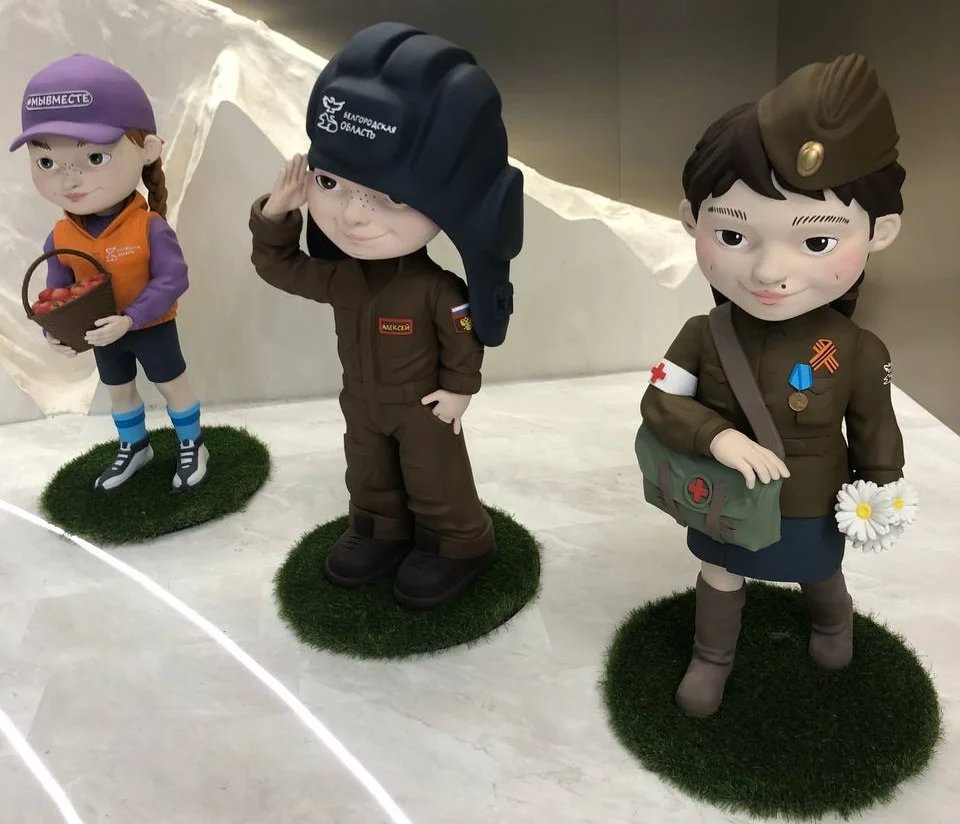
Photo: Vadim Stepanov for Novaya Gazeta Europe
A concert is taking place on the main stage. The honoured Cossack ensemble “Rus” is performing a potpourri of Soviet-era war songs intermingled with Cossack ballads about fighting the Turks, and followed by hip-hop about Kamchatka — which is today’s featured region.
Another visitor told me that they didn’t actually agree with online commentators who described the exhibition as yet another manifestation of Russian fascism,
“It reminds me more of late Brezhnevism. Everyone automatically repeats slogans and listens to patriotic songs, but in fact no one believes any of this crap.”
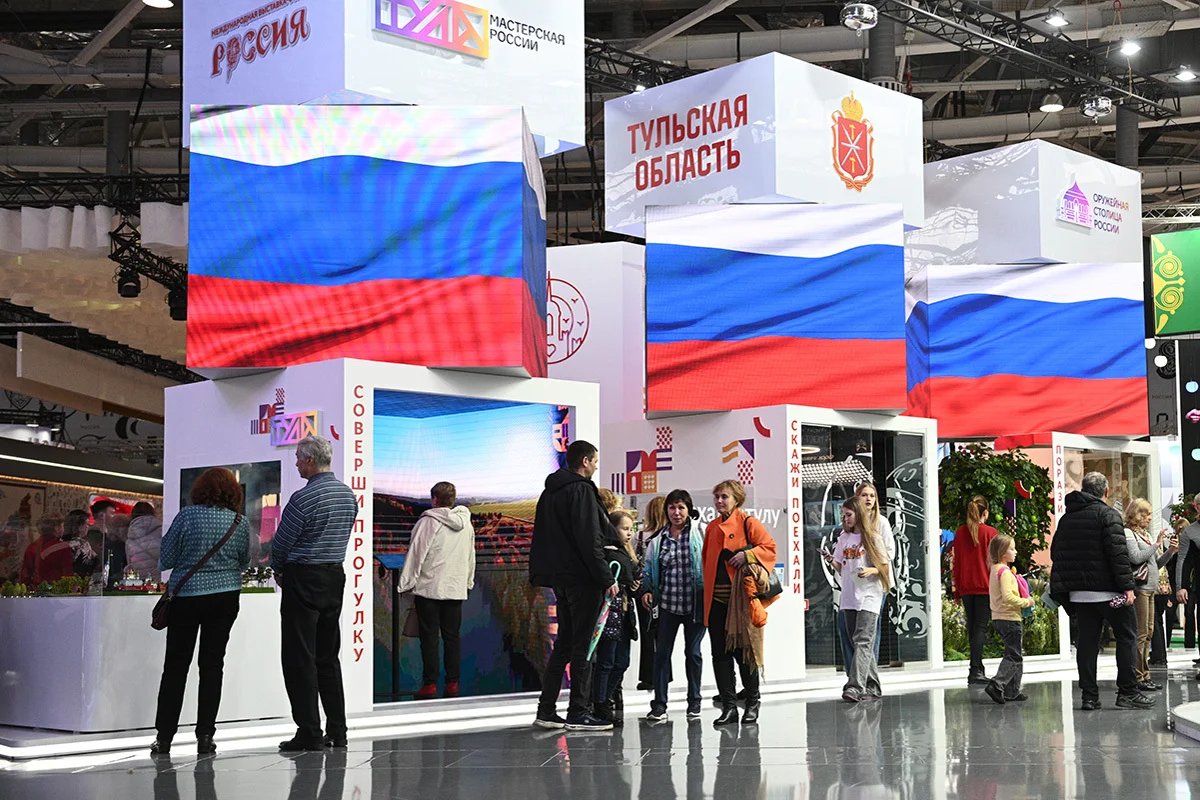
Photo: Kirill Zykov / RIA Novosti / russia.ru
Resistance is futile
The focal point of the exhibition is called “People are changing the country/Russian regions/We are the Far East”. This is a gigantic two-storey building with stands of the “89 regions” of Russia. Most of them are designed in regional style: in St. Petersburg visitors can see copies of the city’s famous raised bridges, and can admire Scandinavian landscapes in Karelia.
Many stands have VR goggles that allow you to fly over the region, while a group of school pupils seem very taken by the chance they have in the Kirov region to milk a statue of a cow. Nearby, a plastic dinosaur named Gosha invites people to visit Tver, while for some reason the Bashkortostan stand is designed to look like the USS Enterprise, the only slight difference being that its portholes allow you to look out over the infinite emptiness of Bashkortostan rather than that of deep space. The Orenburg region is evidently still in the doghouse for its 18th century Pugachev rebellion against Catherine the Great — a somewhat pointed quote from Pushkin’s novel “The Captain’s Daughter” written on the stand reminds visitors of the futility of rebellion.
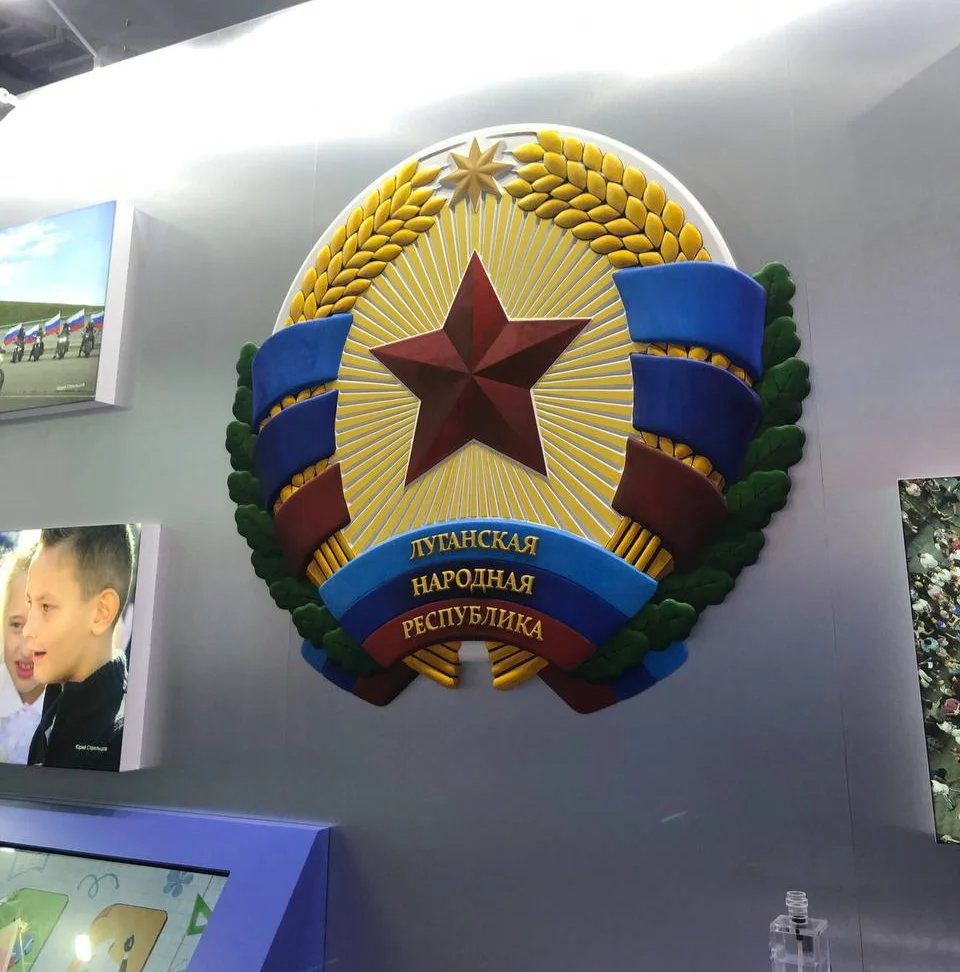
The “Luhansk People’s Republic” stand. Photo: Vadim Stepanov for Novaya Gazeta Europe
The stands of the six occupied Ukrainian territories Russia now claims as its own are grouped together in one corner of the pavilion. In Crimea, teenage volunteers give a wretched karaoke rendition of the now chauvinist classic “I’m Russian” by Shaman, while the interactive stands of the Luhansk and Donetsk “people’s republics” repeat a set of Russian propaganda talking points — “forced Ukrainization”, “the fascist regime in Kiev” and “returning home”.
Nowhere is any mention of the war made, even by means of explanation for the six new regions the Russian Federation has magically acquired. An interactive exhibit detailing famous people from Donbas features composer Sergey Prokofiev and artist Arkhip Kuindzhi alongside a motley crew of Russian separatists. The stands representing Zaporizhzhia and Kherson are both noticeably empty, however, with the main item in each being a visitors’ book in which the masses are free to express their delight at the regions being “back with us again”.
While militarism is not particularly prevalent in the exhibition, it can easily be detected in the displays, whether that be the Vladimir region’s nesting dolls branded with pro-war symbols V and Z, or the Belgorod region’s life-size dolls of a girl dressed in a field nurse’s uniform and a boy wearing a tank helmet and saluting.
Most of the stands feature quotes by the president: Novgorod is “the cradle of our civilisation”.
Meanwhile, the history of Chechnya is given the ultimate Putinist reduction, with the fighting that claimed the lives of tens of thousands of people simply referred to as “the well-known events of 1994-2000”.
At the exit, visitors bid farewell to Moses, a robot from the Jewish autonomous region, and a poster advertising the “Magic of Kolyma”, the remote region in the Russian Far East that will forever be synonymous with Stalin’s gulags.
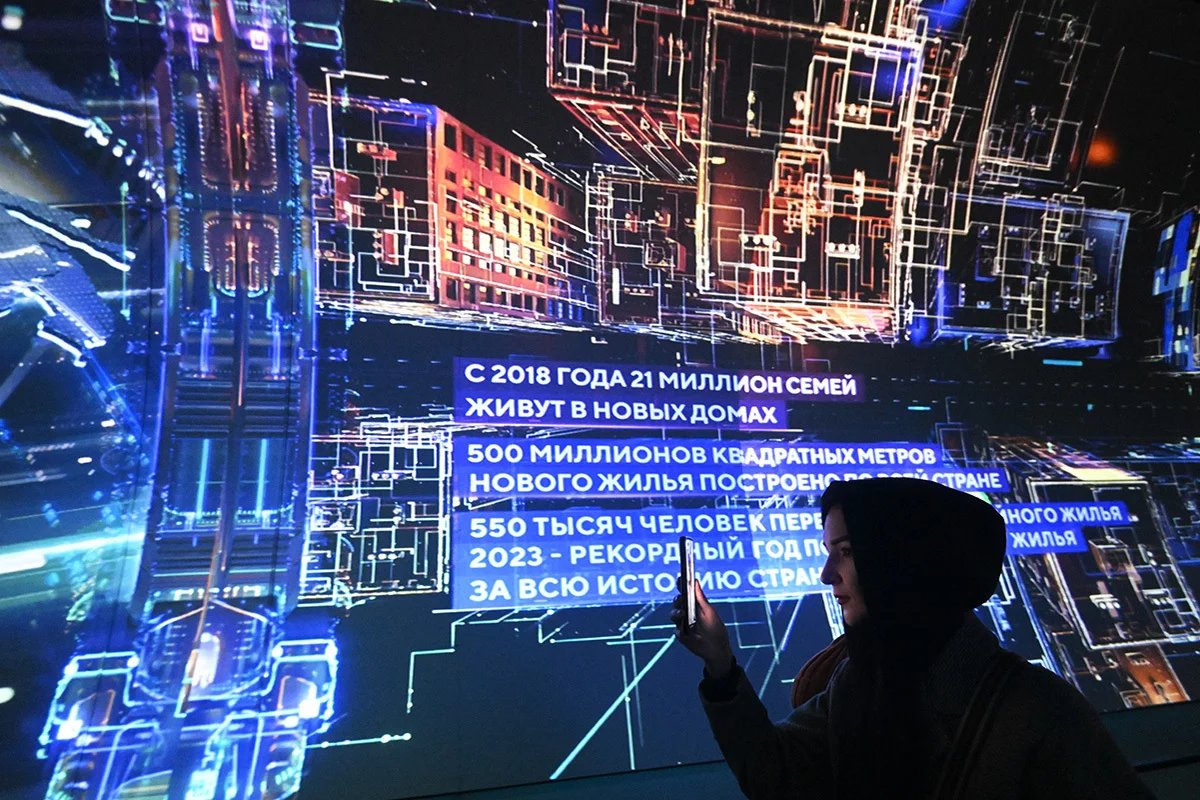
Photo: Kirill Zykov / RIA Novosti / russia.ru
‘Embarrassed nationalism’
There was widespread media speculation that Vladimir Putin would use the opening of the exhibition earlier this month to announce his candidacy in next year’s election. In the end, however, he didn’t even bother attending at all, sending Prime Minister Mikhail Mishustin and a gaggle of other federal officials in his stead. Also in attendance were most of Russia’s regional governors. According to sources close to the Presidential Administration who spoke to Meduza, the “Russia” exhibition is being “taken very seriously” by regional big wigs and is seen as having great potential as a career boost.
Most visitors who spoke to Novaya Gazeta Europe said that they had enjoyed the exhibition, frequently mentioning the exhibition’s massive scale and the sense of national pride it inspired. However, one visitor wasn’t taken in by the spectacle and summarised the exhibit as “just the usual propaganda”.
“I would call the main theme one of ‘embarrassed nationalism’ — that we’re Russians, but we have to take other nations into consideration. Our only common bond is Putin, which is why his quotes are everywhere. The exhibition is not primarily about Russia. It’s about Putin.”
Join us in rebuilding Novaya Gazeta Europe
The Russian government has banned independent media. We were forced to leave our country in order to keep doing our job, telling our readers about what is going on Russia, Ukraine and Europe.
We will continue fighting against warfare and dictatorship. We believe that freedom of speech is the most efficient antidote against tyranny. Support us financially to help us fight for peace and freedom.
By clicking the Support button, you agree to the processing of your personal data.
To cancel a regular donation, please write to [email protected]
